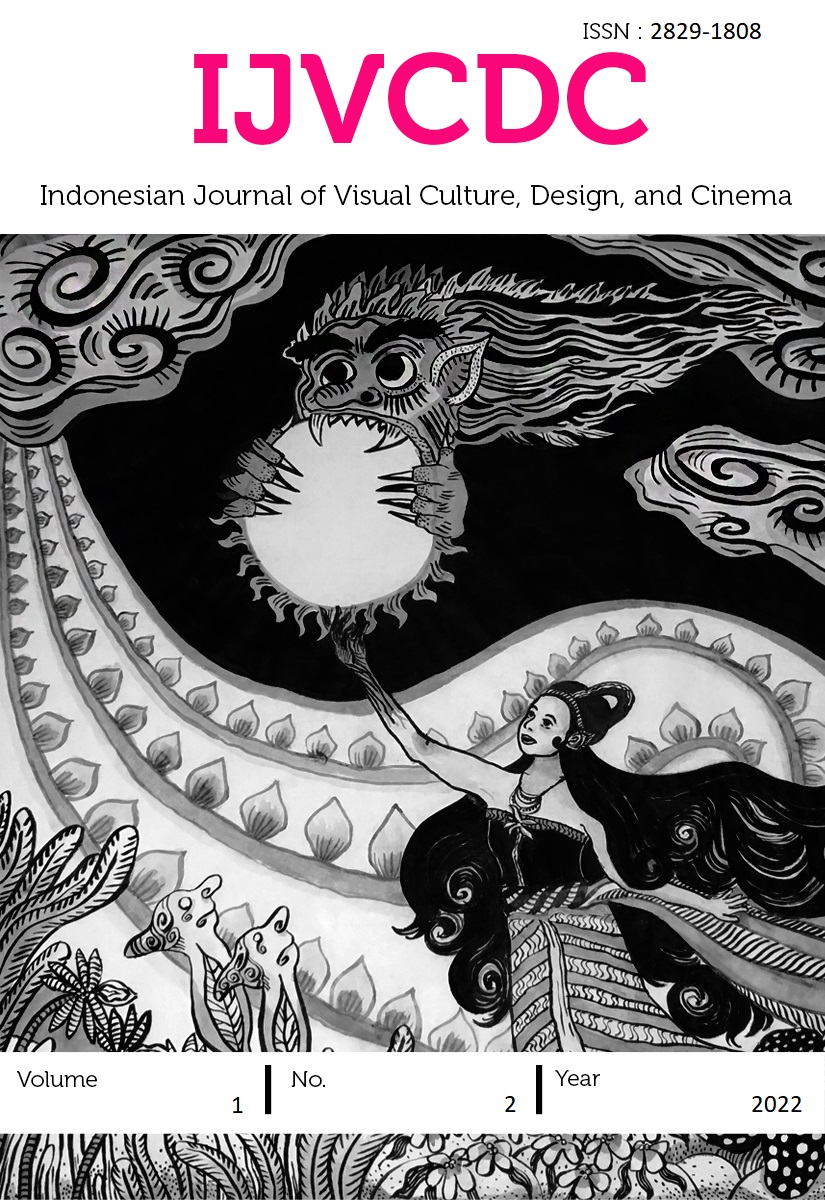An Archaeology of the Interior Case Studies: The Archaeology of Obsolete Stairs
DOI:
https://doi.org/10.21512/ijvcdc.v1i2.8228Keywords:
archaeology, obsolete, materiality, “after-useâ€, interior objectAbstract
This paper discusses the possibility of adopting the study of archaeology as known in cultural theory to redesign the obsolete interior architecture element. The archaeological discipline might offer a possibility to understand the interior element thoroughly through emphasizing the specific material characteristics and their correlation to the different periodical lifetimes of the context. The idea of the archaeology of an interior introduces well-recorded analysis and material experimentation in the physical translation of interior elements. The design process is mainly conducted by emphasizing the notion of "after use" and imagining the object's future to tackle the issue of the obsolete interior. This study becomes an essential basis for understanding the role of an interior architect in responding to the subject of the decayed interior from the other point of view by taking a personal stand for "use" and "after use" beyond the conventional idea of functional space. In the case study, this paper examined the idea of repurposing obsolete stairs as an archetype element through the physical and poetic approach of the object by taking one of the projects in Master interior architecture studio in Rotterdam. This practice aims to augment the material and generate the essential foundation for a design practice that could sensitively respond to the personal stand on the spatial design process.References
Aagaard, A. K. (2015). Materials Driven Architectural Design and Representation in Tangible Means Experiential Knowledge through Materials. EKSIG 2015–KOLDING International Conference 2015 of the Design Research Society Special Interest Group on Experiential Knowledge.
Abramson, D. M. (2016). Obsolescence: An Architectural History. University of Chicago Press.
Almarcegui, L. (2013). in Materiales de construccion del pabellon de espana, Spanish Pavilion at the Venice Art Biennale 2013. https://vernissage.tv/2013/07/08/lara-almarcegui-spanish-pavilion-venice-art-biennale-2013
Bang, A. L., Buur, J., Lonne, I. A., & Nimkulrat, N. (2015). Tangible Means - Experiential Knowledge through Materials. EKSIG 2015–KOLDING International Conference 2015 of the Design Research Society Special Interest Group on Experiential Knowledge.
Bernfeld, S. C. (1951). Freud and archeology. American Imago, 8(2), 107–128.
Bourlanges, M., & Khurtova, E. (2015). Matter and memory an archaeology of the interior. MIARD, Piet Zwart Institute.
Dekkers, M. (2000). The Way of All Flesh: A Celebration of Decay. Harvill Press.
dictionary.com. (2017). Archaeology. https://www.dictionary.com/browse/archaeology
E. D. Hirsch, Joseph F. Kett, & James S. Trefil. (2002). The New Dictionary of Cultural Literacy: What Every American Needs to Know. Houghton Mifflin Harcourt.
Edgar, A., & Sedgwick, P. (2007). Cultural theory: The key concepts (A. Edgar & P. Sedgwick, Eds.). Routledge.
Joris, E. (2014). Drawing as a third party phenomena. THE MEDIATED CITY CONFERENCE. Architecture_MPS.
Karana, E., Pedgley, O., & Rognoli, V. (2014). Materials Experience: Fundamentals of Materials and Design. Butterworth-Heinemann.
McCarthy, C. (2011). Glazing over the Past: Thoughts on Interior Archaeology. Interiors, 2(2), 169–187.
Minale, M. (2014). Past, Present, Future. MIARD, Piet Zwart Institute.
Nobels, E., Ostuzzi, F., Levi, M., Rognoli, V., & Detand, J. (2015). Materials, Time and Emotion: how materials change in time? Tangible Means Experiential Knowledge through Materials. EKSIG 2015–KOLDING International Conference 2015 of the Design Research Society Special Interest Group on Experiential Knowledge.
RuskinJ. (1906). The Seven Lamps of Architecture. George Allen.
Schön, D. (1983). Reflective Practitioner. How Professionals Think in Action. Ashgate.
Travaglini, M. (2002). in Architecture of archaeology: Investigation into Unknown. www.presidentsmedals.com/Entry-9111
van Hinte, E. (2004). Eternally yours: time in design: product value sustenance. 010 Publishers.
Vezzoli, C. A., & Manzini, E. (2008). Design for environmental sustainability. Springer Science & Business Media.
Vila, X. M. A., Blanco, R., & Borrazas, M. (2003). Archaeotecture: archaeology of architecture. British Archaeological Reports.
Zaera-pulo, A. (2005). Alchemical Brother in Herzog & de Meuron: Natural History:[Ausstellung. Canadian Centre for Architecture (CCA (P. Ursprung, Ed.). Springer Science & Business Media.
Downloads
Published
How to Cite
Issue
Section
License
Copyright (c) 2022 Noor Fajrina Farah Istiani

This work is licensed under a Creative Commons Attribution-NonCommercial-ShareAlike 4.0 International License.







